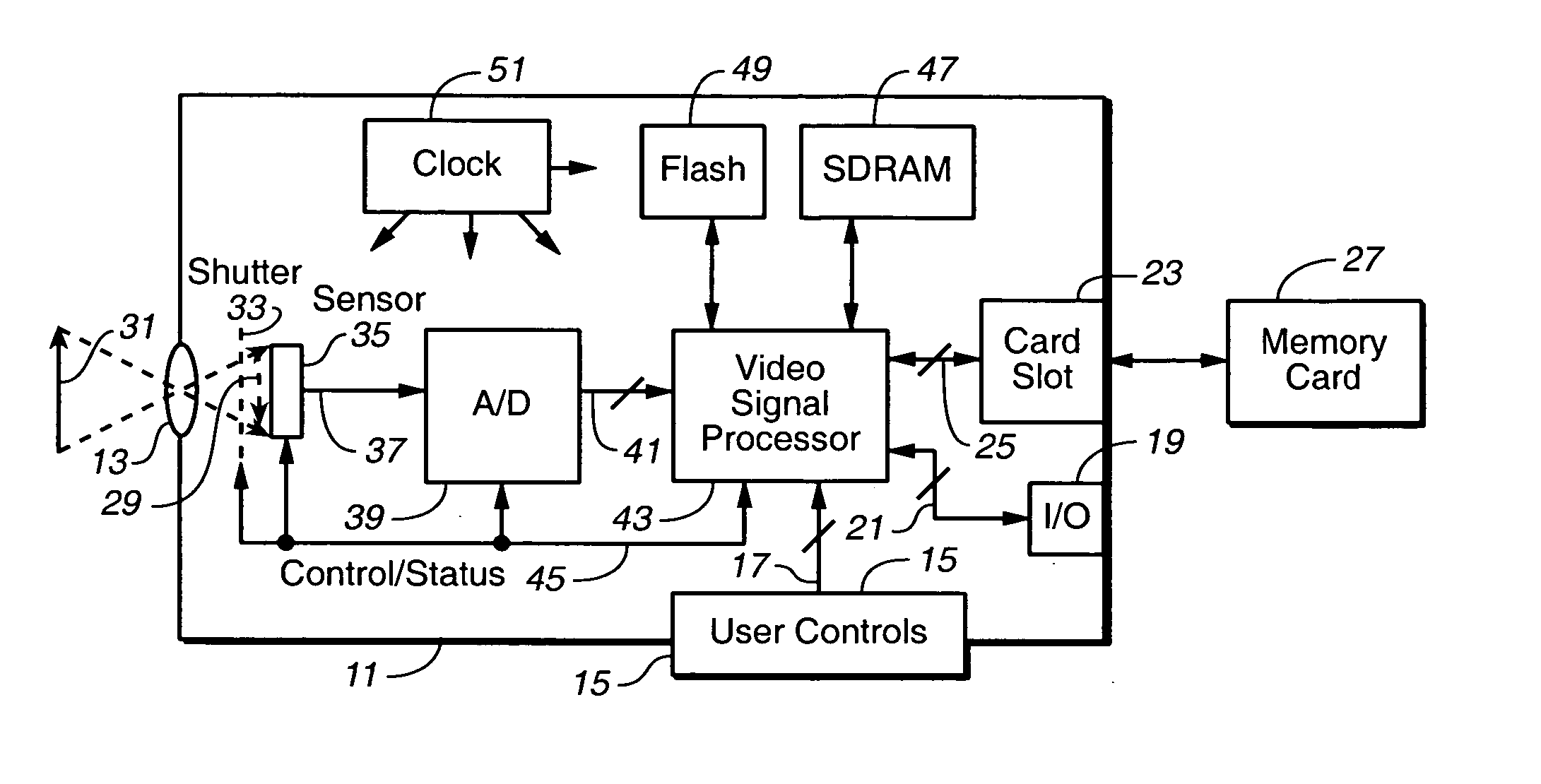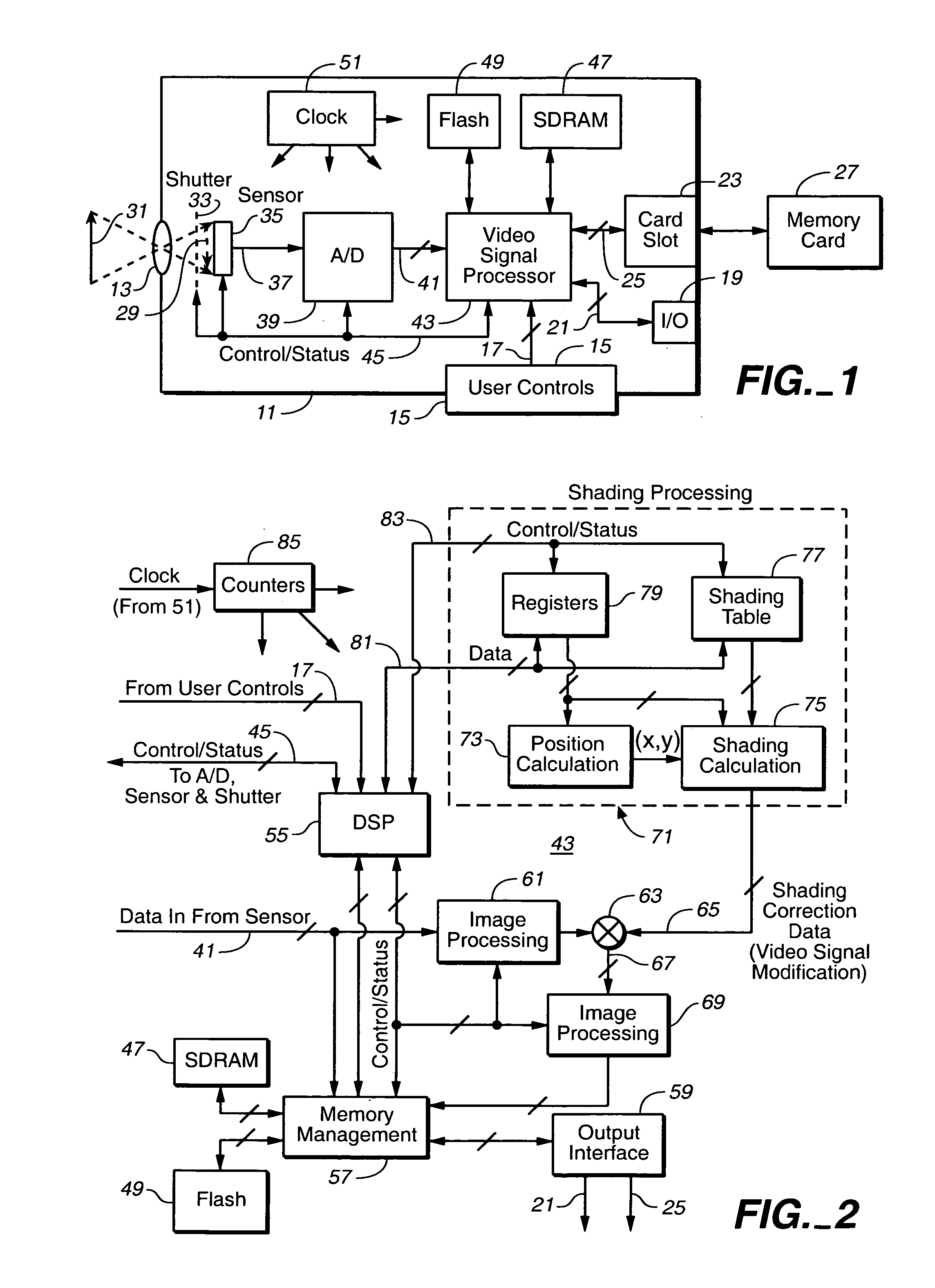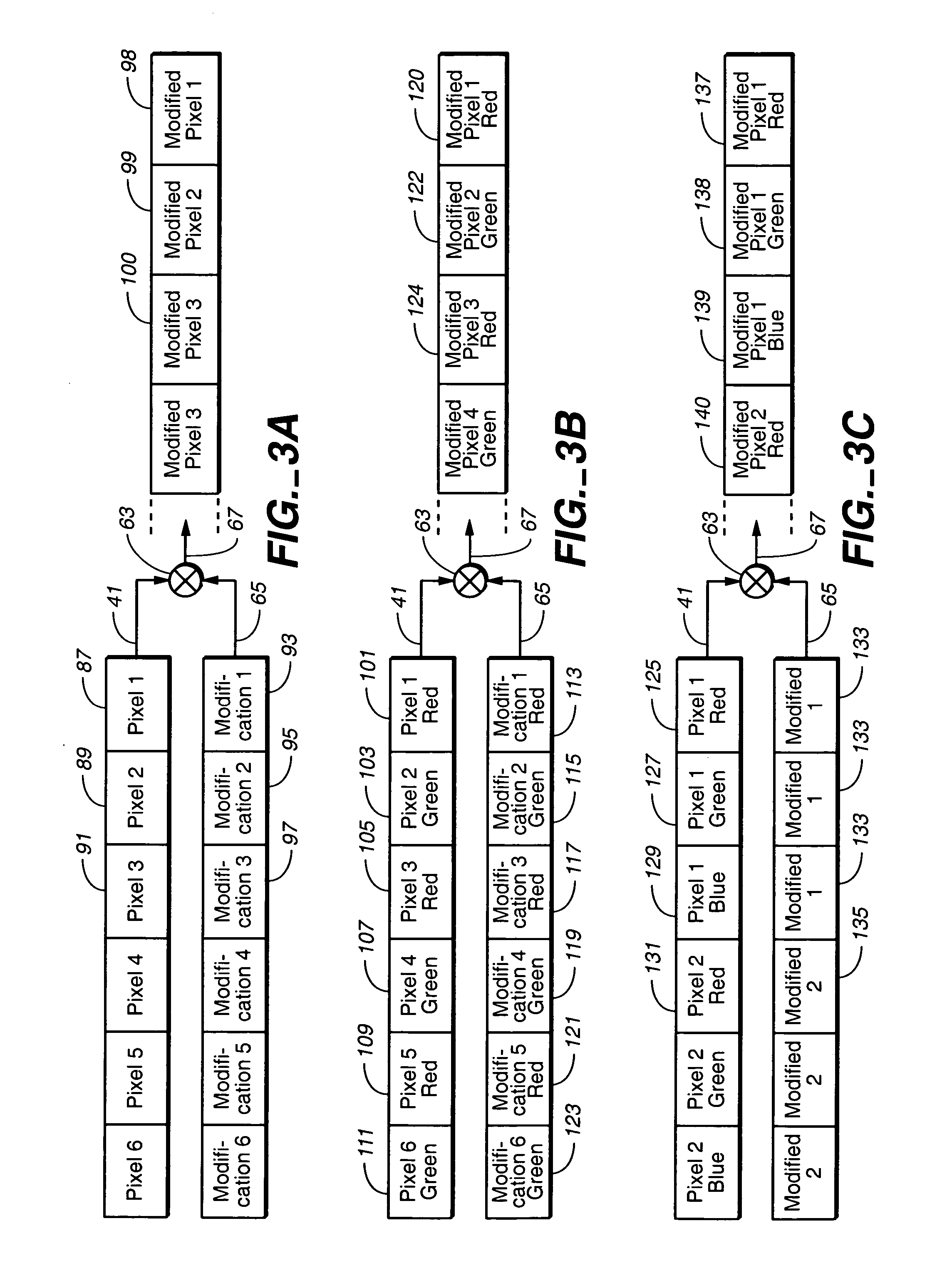Techniques of modifying image field data by exprapolation
a technology of image field data and exprapolation, which is applied in the field of processing video signal data, can solve the problems of too difficult or unpractical to represent intensity shading patterns
- Summary
- Abstract
- Description
- Claims
- Application Information
AI Technical Summary
Benefits of technology
Problems solved by technology
Method used
Image
Examples
Embodiment Construction
The superimposition of variations onto an image or other desired light pattern, due to the phenomena previously discussed, results in a variation of energy in each pixel of that light pattern. These energy variations are not related to the captured image or other picture data itself. In order to compensate for this variation in energy across the photo-sensor, each pixel value could be combined, such as by multiplication, with a shading correction density factor. This factor is unique to each pixel in the image sensor according to the pixel's geographic location in the image sensor matrix. In the ideal case, a table of factors could be created during a calibration procedure that stores the required compensation factor for each pixel of the image in memory. This would allow the needed shading compensation to be effected by executing the following equation with a processing unit in the image capturing device:
PixelOut=PixelIn*F(X,Y) (1)
Where, PixelOut=The output of the image shadi...
PUM
 Login to View More
Login to View More Abstract
Description
Claims
Application Information
 Login to View More
Login to View More - R&D
- Intellectual Property
- Life Sciences
- Materials
- Tech Scout
- Unparalleled Data Quality
- Higher Quality Content
- 60% Fewer Hallucinations
Browse by: Latest US Patents, China's latest patents, Technical Efficacy Thesaurus, Application Domain, Technology Topic, Popular Technical Reports.
© 2025 PatSnap. All rights reserved.Legal|Privacy policy|Modern Slavery Act Transparency Statement|Sitemap|About US| Contact US: help@patsnap.com



